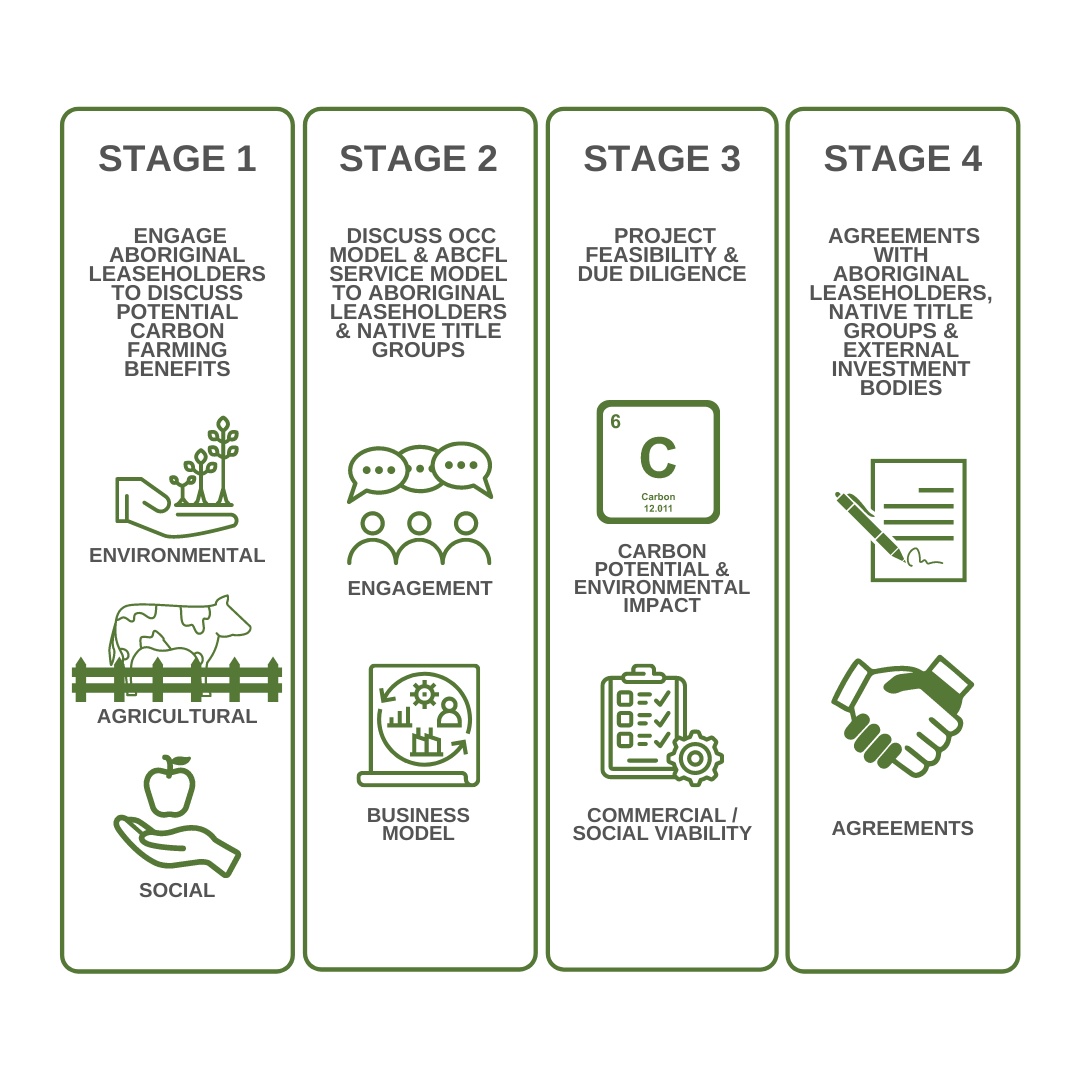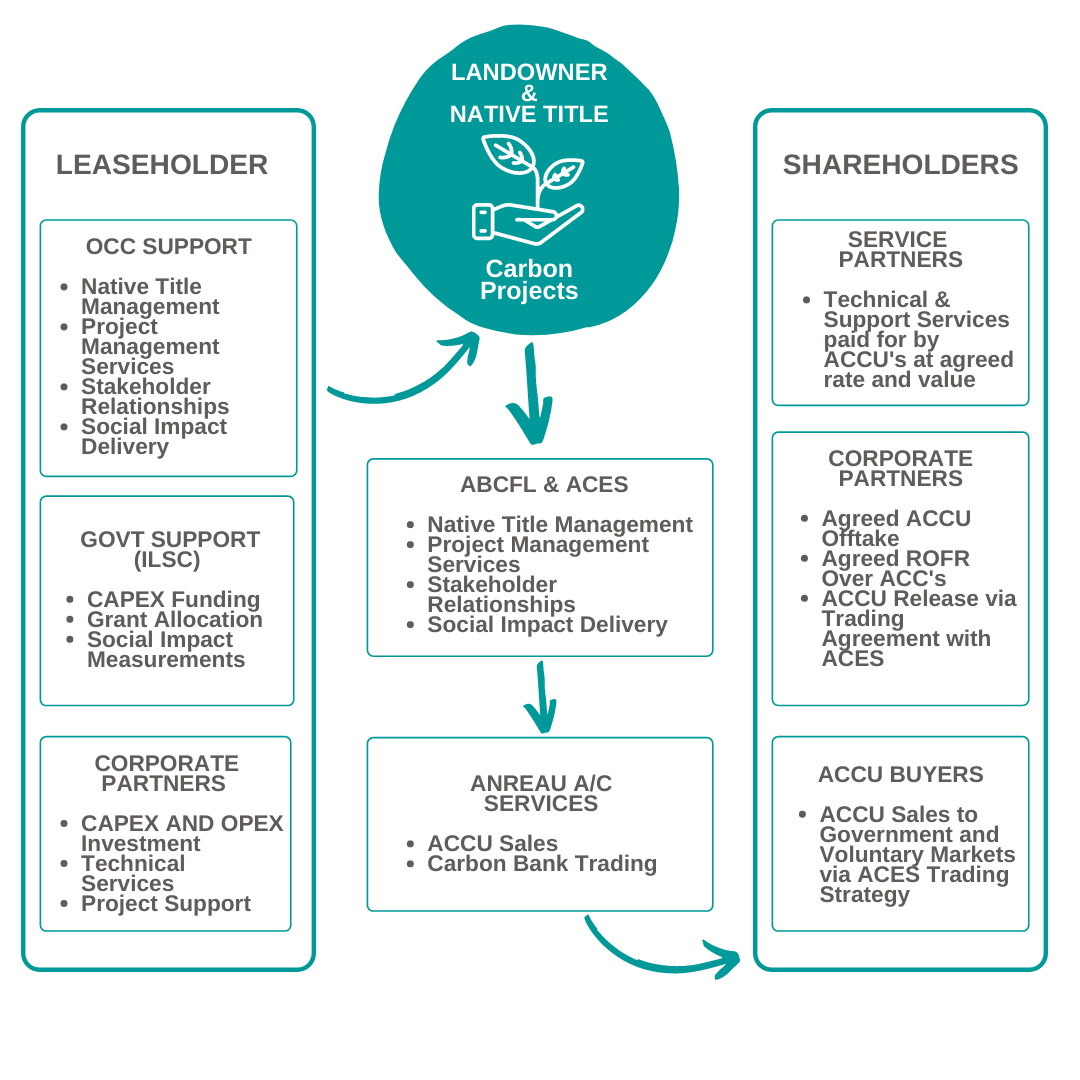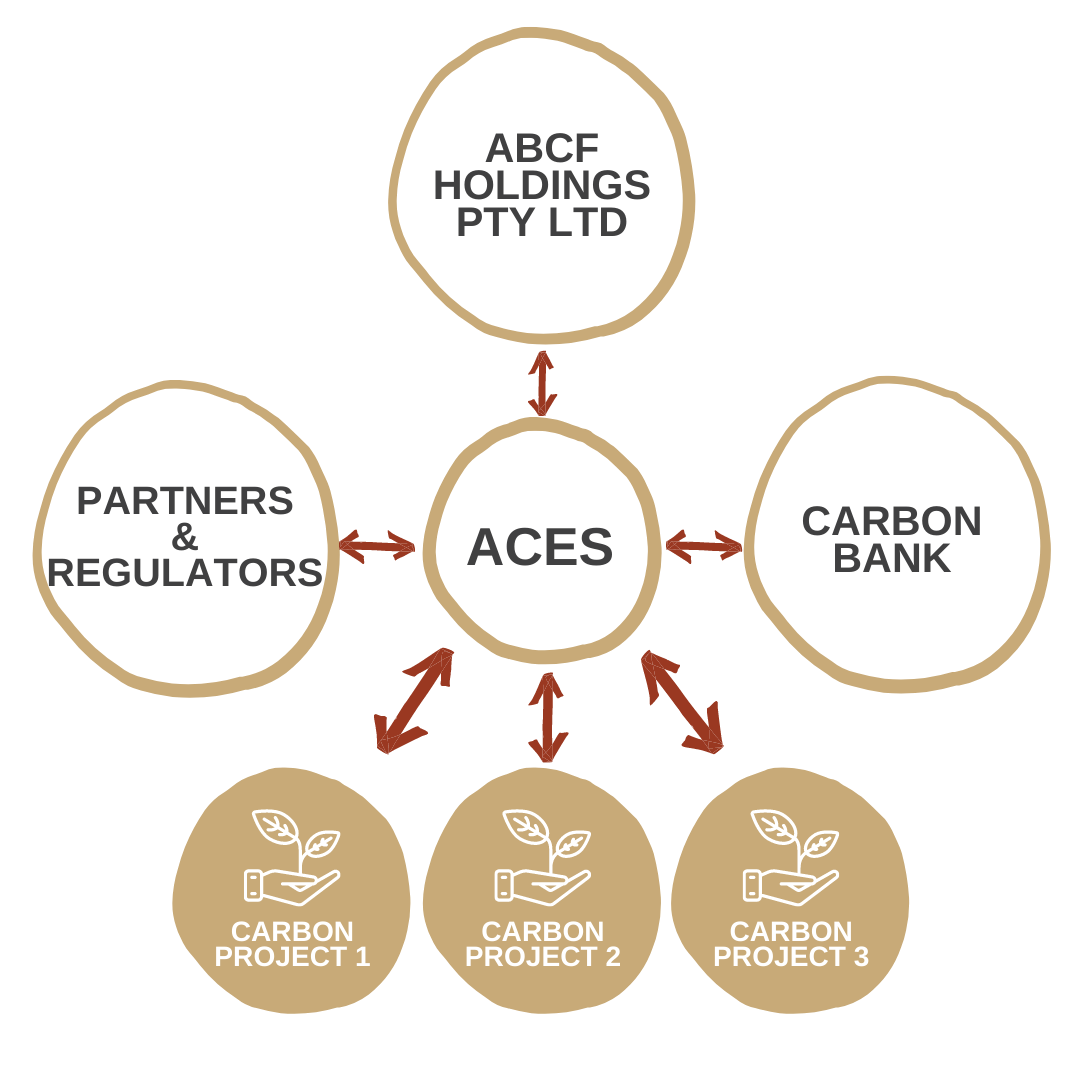the aces carbon model
For an investor, the ACES model offers a unique opportunity to fund a range of socio-economic-environmental projects that provide measurable outcomes. The ABCF and ACES flexible approach to investor funding also allows for a ‘tailor-made’ investment proposition to be considered for project support and/or acquisitions.
STEP 1: Investment
- ACES Start-up Investment: each carbon project requires start-up capital. Funding received with or without obligation will assist significantly in maximising Aboriginal benefits
- ABCF Investment: the social impact component of ACES represents an opportunity for investors to fund programs that are already being delivered, providing tangible socio-economic outcomes that are scalable and meet their preferred audience or On-Country footprint.
- Carbon Off Take Agreement: whether an investor is funding a component of the ACES model, or requires ACCU’s to offset their carbon footprint, the potential to negotiate a long-term offtake agreement exists.
step 2: due diligence
To determine overall viability of projects ACES with the support of its partners will undertaken the following process:
- Detailed and transparent engagement with the leaseholder, Native Title and Aboriginal Corporations relevant to the project to discuss their vision for the land – both outside of the carbon project and its potential impact
- Discuss the ACES model and steps to pass through before a project is live, including a contractual agreement to allow ACES to work with the leaseholder
- Detailed “desk top satellite” and “boots on ground” analysis and modelling to determine the project area and potential ACCU delivery and timing. This detailed analysis included assessing biomass through extensive geospatial analysis, ecological assessments, eligibility assessments, and mapping estimation areas
- Developed agreements with pastoral leaseholders, Native Title groups, investors, and specialist support services to establish the proposed business model.

STEP 3: Partnership Approach
- The ACES framework actively seeks to develop and manage strategic government and private sectors relationships to deliver carbon projects and maximise Aboriginal benefits.
- Our strategy for engaging and securing partnerships is ongoing but ideally any potential partner will commence our relationship within the due diligence period of a potential project. This entry point allows all parties to analyse, develop, and potentially commence a project under transparent and parallel journeys.
STEP 4: Governance
- The founder philosophy applied when developing the OCC structure was used to ensure that Aboriginal people retained ownership and control of their projects, and that flexible, accurate and timely processes are in place to meet CER regulations
- All projects will have their own legal structure under the ACES trading name to ensure project independence and individual risk and governance strategies
- Each ACES subsidiary Board will include a minimum of three Directors; one representing ACES, one representing the ‘Aboriginal Project Partner’, and one independent. This executive structure also encourages a relevant Native Title representative to hold a non-voting position to ensure transparency and inclusion
STEP 1: Investment Overview

Step 2: Due Diligence Overview

STEP 3: Partnership Overview

Step 4: Governance Structure

Carbon Project Validation Form
This form captures core project information that will allow potential buyers an insight into your carbon project and an insight into your carbon project and any social impact that it may deliver.
To fill this form electronically please download and save it to your computer. Once complete send the form to info@aces.com.au